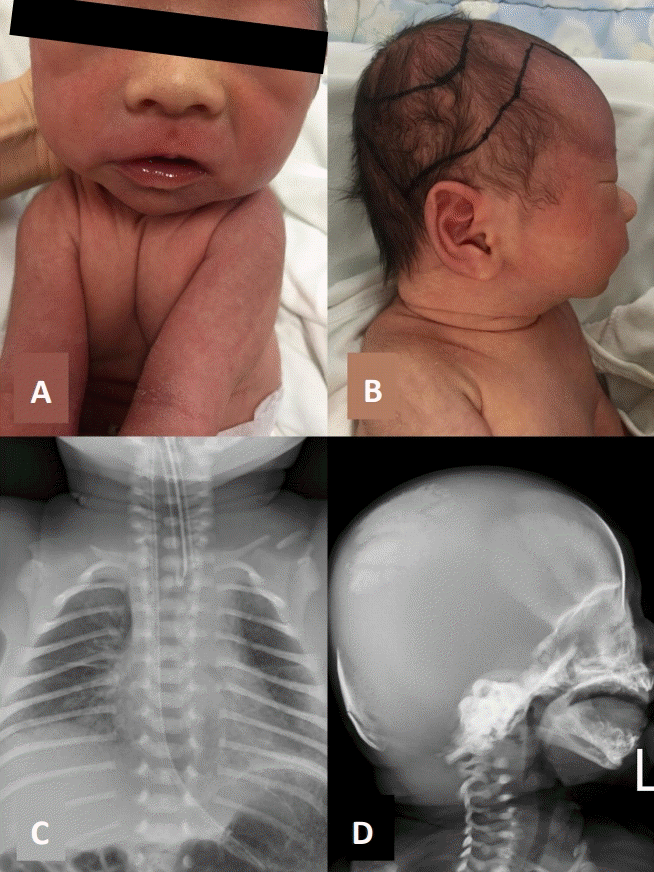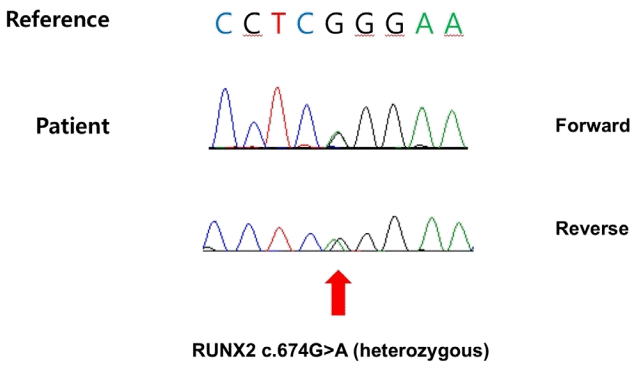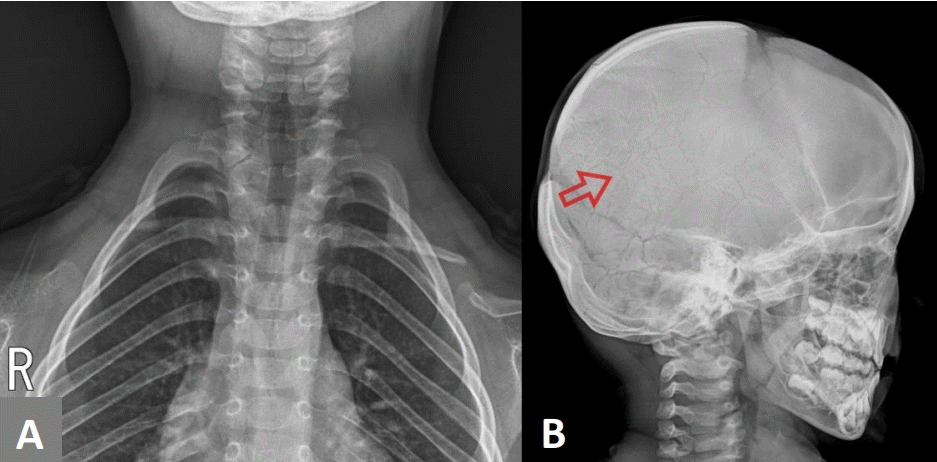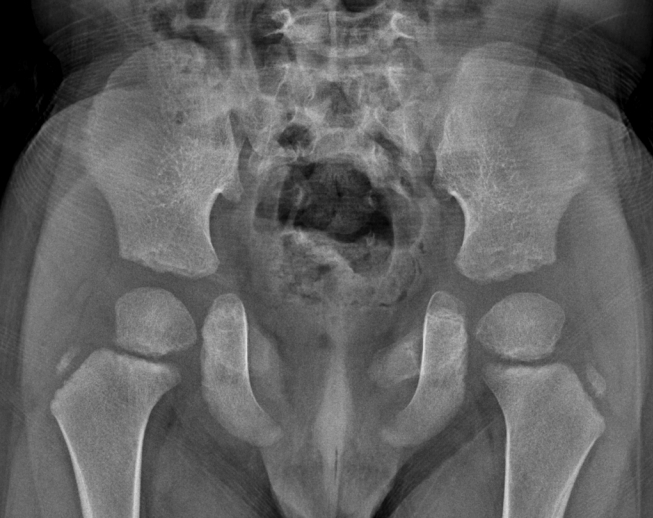1. Marie P, Sainton P. Sur la dysostose cleido-cranienne herediataire. Rev Neurol. 1898; 6:835–8.
2. Machol K, Mendoza-Londono R, Lee B. Cleidocranial dysplasia spectrum disorder. In : Adam MP, Ardinger HH, Pagon RA, Wallace SE, Bean LJH, Stephens K, editors. GeneReviews [Internet]. Seattle: University of Washington, Seattle;p. 1993–2020. Available from:
https://www.ncbi.nlm.nih.gov/books/NBK1513/.
3. Mundlos S, Otto F, Mundlos C, Mulliken JB, Aylsworth AS, Albright S, et al. Mutations involving the transcription factor CBFA1 cause cleidocranial dysplasia. Cell. 1997; 89:773–9.
4. Mundlos S. Cleidocranial dysplasia: clinical and molecular genetics. J Med Genet. 1999; 36:177–82.
5. Hamner LH 3rd, Fabbri EL, Browne PC. Prenatal diagnosis of cleidocranial dysostosis. Obstet Gynecol. 1994; 83(5 Pt 2):856–7.
6. Zhou G, Chen Y, Zhou L, Thirunavukkarasu K, Hecht J, Chitayat D, et al. CBFA1 mutation analysis and functional correlation with phenotypic variability in cleidocranial dysplasia. Hum Mol Genet. 1999; 8:2311–6.
7. Golan I, Baumert U, Hrala BP, Mussig D. Dentomaxillofacial variability of cleidocranial dysplasia: clinicoradiological presentation and systematic review. Dentomaxillofac Radiol. 2003; 32:347–54.
8. Komori T. Signaling networks in RUNX2-dependent bone development. J Cell Biochem. 2011; 112:750–5.
9. Jaruga A, Hordyjewska E, Kandzierski G, Tylzanowski P. Cleidocranial dysplasia and RUNX2-clinical phenotype-genotype correlation. Clin Genet. 2016; 90:393–402.
10. Ma D, Wang X, Guo J, Zhang J, Cai T. Identification of a novel mutation of RUNX2 in a family with supernumerary teeth and craniofacial dysplasia by whole-exome sequencing: a case report and literature review. Medicine (Baltimore). 2018; 97:e11328.
11. Stewart PA, Wallerstein R, Moran E, Lee MJ. Early prenatal ultrasound diagnosis of cleidocranial dysplasia. Ultrasound Obstet Gynecol. 2000; 15:154–6.
12. Hermann NV, Hove HD, Jorgensen C, Larsen P, Darvann TA, Kreiborg S, et al. Prenatal 3D ultrasound diagnostics in cleidocranial dysplasia. Fetal Diagn Ther. 2009; 25:36–9.
13. Gomleksiz C, Arslan E, Arslan S, Pusat S, Arslan EA. Delayed diagnosis of cleidocranial dysplasia in an adult: a case report. Acta Med Acad. 2014; 43:92–6.
14. Mahajan PS, Mahajan AP, Mahajan PS. A rare case of cleidocranial dysplasia presenting with failure to thrive. J Nat Sci Biol Med. 2015; 6:232–5.
15. Karaguzel G, Akturk FA, Okur E, Gumele HR, Gedik Y, Okten A. Cleidocranial dysplasia: a case report. J Clin Res Pediatr Endocrinol. 2010; 2:134–6.
16. Balioglu MB, Kargın D, Albayrak A, Atici Y. The treatment of cleidocranial dysostosis (Scheuthauer-Marie-Sainton Syndrome), a rare form of skeletal dysplasia, accompanied by spinal deformities: a review of the literature and two case reports. Case Rep Orthop. 2018; 2018:4635761.





 PDF
PDF Citation
Citation Print
Print






 XML Download
XML Download